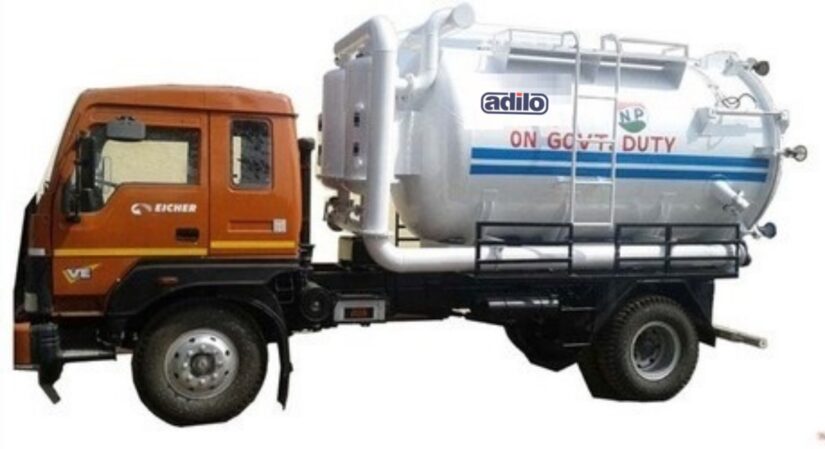Suction Dump Tank Manufacturer In Chattisgarh
A suction dump tank, also known as a vacuum dump tank or simply a dump tank, is a container used in various industries to collect and store fluids or materials through suction or vacuum. It is typically designed to handle large volumes of liquid or solid waste and facilitate efficient disposal or transport.
The construction and functionality of a suction dump tank can vary depending on its intended use and the specific requirements of the industry it serves. However, here are some general features and applications:
- Construction: Suction dump tanks are typically made of durable materials such as stainless steel or high-density polyethylene (HDPE) to withstand the corrosive or abrasive nature of the materials being collected. They are often cylindrical or rectangular in shape and come in various sizes, ranging from small portable tanks to large fixed installations.
- Suction System: These tanks are equipped with a suction system, which may consist of a vacuum pump or a suction line connected to a centralized vacuum system. The suction creates a negative pressure within the tank, allowing fluids or materials to be drawn in.
- Fluid Collection: Suction dump tanks are commonly used in industries such as wastewater treatment, industrial cleaning, oil and gas, and environmental services. They can collect liquids such as wastewater, sludge, sewage, or chemical waste from different sources, including tanks, pipelines, or containment areas.
- Transport and Disposal: Once the suction dump tank is filled, it can be transported to a designated disposal facility, treatment plant, or processing unit. Some tanks may have built-in features such as integrated wheels or lifting points to facilitate transportation and handling.
- Safety and Maintenance: Suction dump tanks often have safety mechanisms to prevent overfilling, such as level sensors or pressure relief valves. Proper maintenance and cleaning are essential to ensure the longevity and reliable operation of the tank, as well as to prevent contamination or hazardous situations.
It’s important to note that the specific features, capabilities, and terminology used may vary depending on the industry and context in which the suction dump tank is employed. If you have a particular application or scenario in mind, please provide more details so that I can offer more tailored information.
A suction dump tank, also known as a vacuum dump tank or simply a dump tank, is a container used in various industries to collect and store fluids or materials through suction or vacuum. It is typically designed to handle large volumes of liquid or solid waste and facilitate efficient disposal or transport.
The construction and functionality of a suction dump tank can vary depending on its intended use and the specific requirements of the industry it serves. However, here are some general features and applications:
- Construction: Suction dump tanks are typically made of durable materials such as stainless steel or high-density polyethylene (HDPE) to withstand the corrosive or abrasive nature of the materials being collected. They are often cylindrical or rectangular in shape and come in various sizes, ranging from small portable tanks to large fixed installations.
- Suction System: These tanks are equipped with a suction system, which may consist of a vacuum pump or a suction line connected to a centralized vacuum system. The suction creates a negative pressure within the tank, allowing fluids or materials to be drawn in.
- Fluid Collection: Suction dump tanks are commonly used in industries such as wastewater treatment, industrial cleaning, oil and gas, and environmental services. They can collect liquids such as wastewater, sludge, sewage, or chemical waste from different sources, including tanks, pipelines, or containment areas.
- Transport and Disposal: Once the suction dump tank is filled, it can be transported to a designated disposal facility, treatment plant, or processing unit. Some tanks may have built-in features such as integrated wheels or lifting points to facilitate transportation and handling.
- Safety and Maintenance: Suction dump tanks often have safety mechanisms to prevent overfilling, such as level sensors or pressure relief valves. Proper maintenance and cleaning are essential to ensure the longevity and reliable operation of the tank, as well as to prevent contamination or hazardous situations.
It’s important to note that the specific features, capabilities, and terminology used may vary depending on the industry and context in which the suction dump tank is employed. If you have a particular application or scenario in mind, please provide more details so that I can offer more tailored information.

